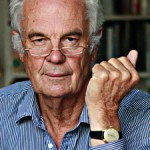Is Europe’s far-right in decline?
By Jonathan Power
The French elections are almost over with the National Front, the party of the Far-Right led by the Le Pen family, losing strength. As recently as 2002 it did well enough to promote Jean-Marie Le Pen into the final round of the presidential election, up against Jacques Chirac. Needless to say in the final round even the left voted en masse for Chirac to ensure that Le Pen was thrashed.
One might expect that the Far-Right with its pool of support from the disaffected working class might do well in these troubled times. But in fact the overwhelming majority of the working class is staying put in its traditional home on the left. Right now jobs, pensions and the welfare state are more crucial issues for these voters than nationalism and waging a battle against immigrants and asylum seekers. People may say that among West European electorates immigration is number one on their negative list, as they did in a poll this month in Britain’s Prospect magazine, but this doesn’t alter their voting intentions.
Winding the clock back tells a different story. Over the past 60 years no other ideological group has made such rapid progress. Since the mid 1980s the Far-Right has quadrupled its support in Western Europe. It has a sizeable presence in French, Austrian, Norwegian, Dutch, Danish, Italian, Greek and Swiss politics. But in the UK, Ireland, Finland, Portugal, Germany and Spain the Far-Right has not become a permanent force in national politics.
In all these countries it has had a significant effect in enlarging the contours of legitimate political debate, injecting it with racism, xenophobia and anti-Semitism. Even in Germany where because of historical memories it has been least successful it has had a measurable influence on policy.
In Germany one can chalk out the lines Far-Right thinking has crossed. It began in the 1970s when the number of immigrants and asylum seekers started to grow fast. One poll revealed that half the population had some degree of animosity towards immigrants and this cut across party lines evenly. In 1978 with little debate a bill was passed unanimously restricting asylum seekers. In the 1980s the conservative Christian Democrat Party enlarged the theme to a question of national identity.
Later the Social Democratic government found that it couldn’t put the immigration genie back into the bottle. The media was giving it lots of attention and although, unlike in other European countries, the media was careful not to give the Far-Right editorial support the publicity helped its causes. But over time as the mainstream media saw the damage its publicity was causing it practically closed down its reporting on the activities of the Far-Right.
In France a much larger Far Right has been impossible to ignore. The press has given them a great deal of attention and both Le Pens (father and daughter, Marine) have won a lot of television time.
In the recent presidential election, as in 2007, Nicolas Sarkozy tacked strongly to the right on immigration and national identity issues in an attempt to win over the Far Right’s vote. He had some success but not as much as in 2007 when the National Front had its lowest electoral support in two decades. This time Far-Right voters did not win Sarkozy the election; there is a limit to the rightward distance a head of government can travel if he or she wants to maintain their credibility both to govern and to work with other members of the European Union.
Austria could not be more different than Germany despite the close cultural and economic ties. Austria took decades to face up to the reality of its collusion with Hitler. Whereas Germany recognized its sins Austria avoided mention of them. This became a fertile ground for rightist ideologues.
When the European Union, Canada and the US reacted strongly to the former UN Secretary-General of the UN, Kurt Waldheim, running for president after it was discovered that he had had pro-Nazi sympathies during the war, it turned Austrian voters in his favour and propelled the Far-Right party, the FPO, to become part of mainstream political society. The party had easy access to the media.
The rapid rise of the FPO’s leader, Jorg Haider, was extraordinary. By 1999 he had made it Austria’s second largest party and it joined a coalition government led by the Christian Democrats. Its anti-immigrant and nationalistic policies were now front and centre. The Far-Right continues to be an important force in Austrian politics.
Some observers expected that the economic crisis would inject new life into the Far-Right all over Europe as it allied itself with nationalist causes such as being against the EU, globalization and immigration. But the mainstream parties, especially the Socialists, seem to be neutering their appeal, except in Austria. This has to be good news in this era of economic misery.
Copyright Jonathan Power
